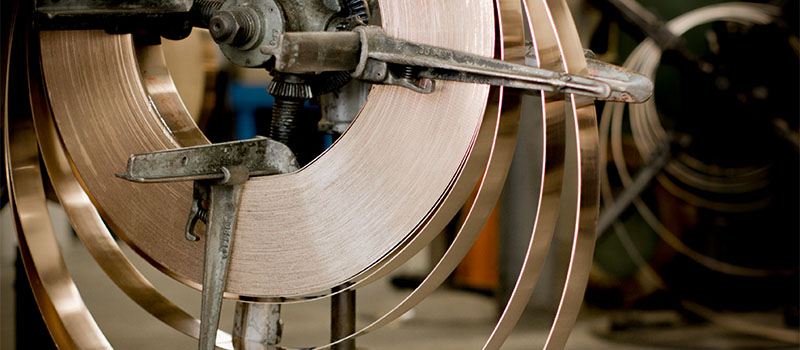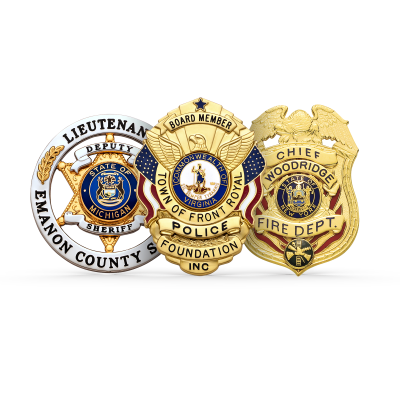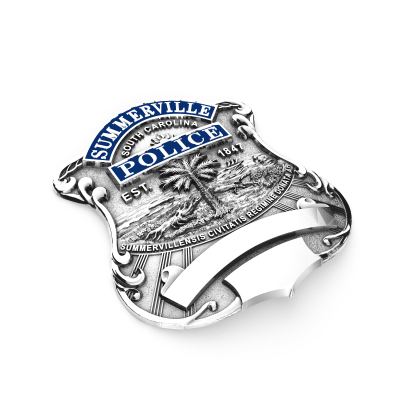Are Police Badges Made of Metal?
Dive into a story of facts and tall tales behind the use of metal in badges.

Were you thinking this was an easy answer, like “Yes, of course, police badges are made of metal?” There is so much history, sprinkled with tall tales, urban legend, and trivia questions surrounding the type of metal in badges and the origin of metal use in badges. While there will be a more serious answer about metal alloys and electroplated metal finished to answer this question, this article looks at historical lore and a couple of tall tales of where metal badges originated.
Before we start with the history of metal badges, we will take a quick look at the definition of metals! A metal alloy is a “mixture of chemical elements of which at least one is a metal.” Copper alloy families include brass, bronze, and copper-nickel. All of these metals have been used for badges. Gold and silver in badges largely refer to finishes, which are thin layers of metal, on the badge; however, some “top brass” might have had gold and silver inlay. Let’s explore the variety of metal alloys used throughout history leading up to today’s modern brass badge.
The Real History of Metal Badges
The oldest badges in the United States were on the east coast, do you think they came over on the Mayflower? Many designs and styles copied the metal embellishments found on uniforms in the UK. Where the history differs is that some sources mention copper buttons, some mention gold oak leaf insignia on hats, and others mention metal badges. There are many references to using copper as part of the military uniform in the UK.
In New York’s early days, badges were made of tin, a tin alloy, or nickel. These metals were less expensive and readily available. However, in Policeguide.com, there are images of sterling silver badges and some insignia with gold inlay dating back to the 1800’s in New York City. In 1901, Tiffany & Company made a badge using gold and platinum for the NYC Police Commissioner and this badge is still in use by the police commissioner today.
Early sheriff’s badges out west were thought to be made of copper or gold alloy, but in reality, they were made with whatever metals were available. Most original Western badges were made with brass and nickel silver, with gold alloys reserved for higher-ranking officers. The San Jose Police Department badge history states that in the early 1800’s they went from five to six and then to a seven-point star with the earliest badges made of sterling silver and 10k alloy gold. Eventually, they too moved to chrome, tin, and nickel to save other metals for wartime manufacturing.
From the earliest tradition, American law enforcement badges were made of metal. The 19th and 20th centuries saw a change in metals from tin, nickel silver, and gold alloy to a fairly consistent use of brass. Very special, high-end badges are made from Sterling Silver today, but this is not the norm. Brass badges are stronger which makes them better for everyday use. With that daily use, metal badges came to reflect the profession and identity of law enforcement.
The Urban Legends of Badges
Some of our modern-day words and phrases were rumored to begin either with a badge description or in some cases derived from the badge metal. For example, in early New York, the badges made of tin were called “tins” and it was officer slang to refer to their badges as tins. This was confirmable!
A story with disputed origins is that the phrase “top brass”, meaning the highest-ranking officers, possibly started with the UK Army in the 19th century. They had “gold” oak leaves on their hats. Or, version two says top brass got started with the “gold” insignia on caps worn by French Officers in Napoleon’s military in France. It is hard to know if the UK or France started the phrase top brass, but it still means high-ranking officers today.
The one story that had way too many origin stories was where the word “Cop” came from. The first story was that Cop derived from Copper, the metal used for badges. This was the story according to the Urban Dictionary, which is interesting, but is it factual? A Facebook Trivia Page also said the word Cop came from the Copper buttons on officers' uniforms in the UK. It may be a great trivia question, but is it true? After some more digging, the word Cop has most likely evolved from the Latin, “capere,” meaning “to seize.” Could it be that the word Cop derived from a verb instead of a metal? We would love to find more information on this!
The 21st Century Metal Badge
We know that metal elements like buttons, insignia, and probably constable badges originated in the UK and influenced the law enforcement tradition of metal badges in America. American badge manufacturers have used different metals throughout the centuries. Today, metal badges are traditional for law enforcement and are made from brass. There are a variety of brass alloys used for badges. Each manufacturer has its preferred brass alloy since they vary in color and how well a detailed design can be pressed in the metal.
To take this full circle, there is one important factoid to tie brass back to the original story of copper badges. Brass is a copper alloy! Brass is a mixture of copper and either zinc, nickel, or tin. Even though most law enforcement badges are made of some type of brass, there are a couple of exceptions.
Badges That Are Not Metal
On some occasions, a metal badge is not used, but the badge is still present on the outermost layer of the uniform. Embroidery is one example of a non-metal badge. A badge can be woven onto performance uniforms or an embroidered badge is adhered to the shirt. Another non-metal badge is made from polyurethane and this type of non-metal badge is called a flexible badge. The use of a flexible badge is most likely for the practical reason that it sits better on a polo shirt or casual attire. The original and official badge for law enforcement is made of metal.
Has “Real” Gold Ever Been Used for Badges?
In the UK there are historical references to “gold” insignia, either on hats or Army uniforms. Did they use real gold? Gold inlay was perhaps used for the highest-ranking officers, but copper or brass was most likely the metal used.
Today’s electroplated badges have real gold on them! Electroplate layers are measured in millionths of an inch and are added to protect the brass from corrosion or tarnishing. Nickel is the first electroplated layer and gold is a popular second decorative layer. Gold can be applied in different alloys and thicknesses and the gold layer added is typically 22K gold. Trace amounts of hard metals, such as cobalt and indium, are mixed into the gold to improve hardness and make the surface more durable. Some manufacturers will offer 24K gold as a decorative layer, but 24K gold is very soft and is not ideal for an everyday badge.
Metal Police Badges Through History
From inexpensive tin to brass, there is a long history of metal to make police badges. What does this mean for you when you are issued your badge? While there are some types of police work where embroidery or polyurethane work better, your modern badge made of a brass alloy is durable for daily use. Brass metal alloys are a good metal for the detailed design elements on your badge like stars, sunrays, eagles, or even local landmarks.
Shiny or two-tone finishes on a badge reflect the honor and prestige of a metal badge as a symbol of law enforcement. Badge finishes can also signal rank, silver for officers, and gold or two-tone for highest ranking “top brass!” Today’s traditional use of metal badges has a rich history, some fact, and some fiction, but what remains true in all instances is that no matter the type of metal, a badge is the most recognizable and iconic part of your law enforcement uniform.



